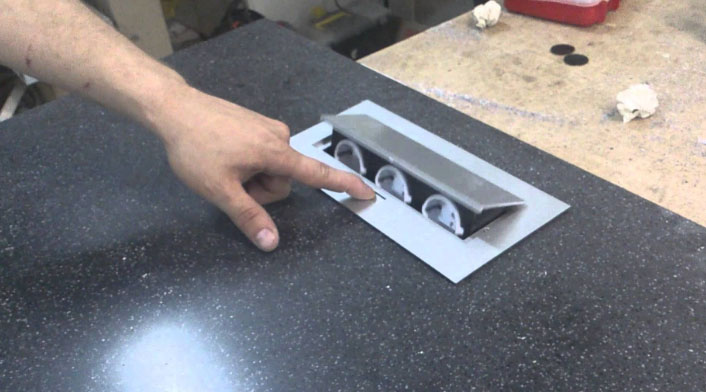Built-in socket: densely, convenient and safe
No matter how much it has been found sockets on the kitchen during construction of the building or repair of apartments, sooner or later there will be a need for additional power supplies, because the number of types of household appliances is growing, purchased new devices or install additional lights. Venturing shtroblenie walls, lengthen the cable and install a new outlet in honor of acquiring each new device does not make sense. Maximum load on the socket in a standard apartment should not exceed 1,4 kW, so installing tees and extension is dubious way out.
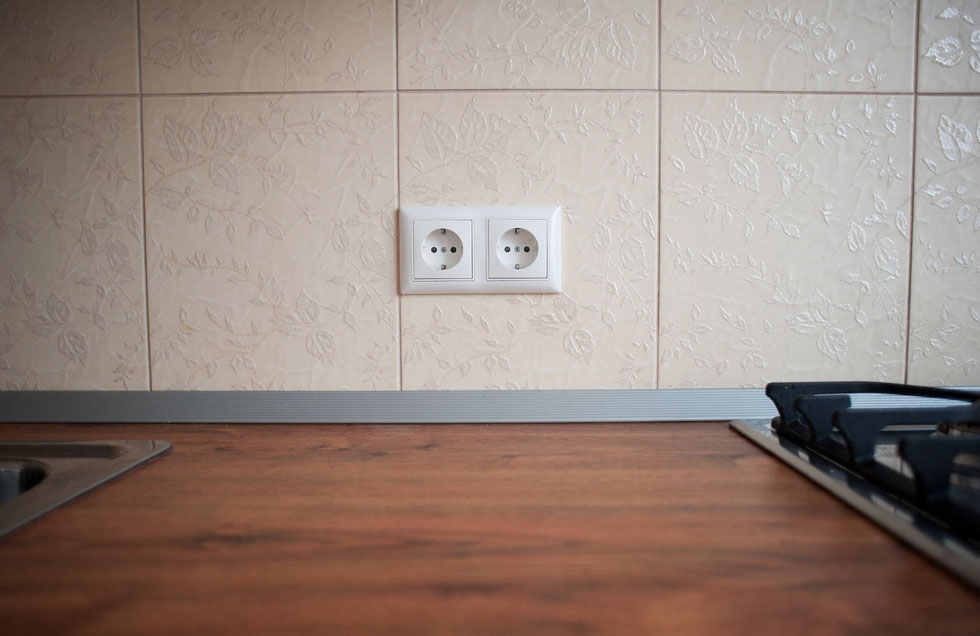
In such situations, recessed sockets for the kitchen and their variants are the best way to increase the number of electrical connection points without large-scale repair work and can get rid of are located in a prominent position wire.
Specificity of the kitchen equipment and electrical connections: correct location
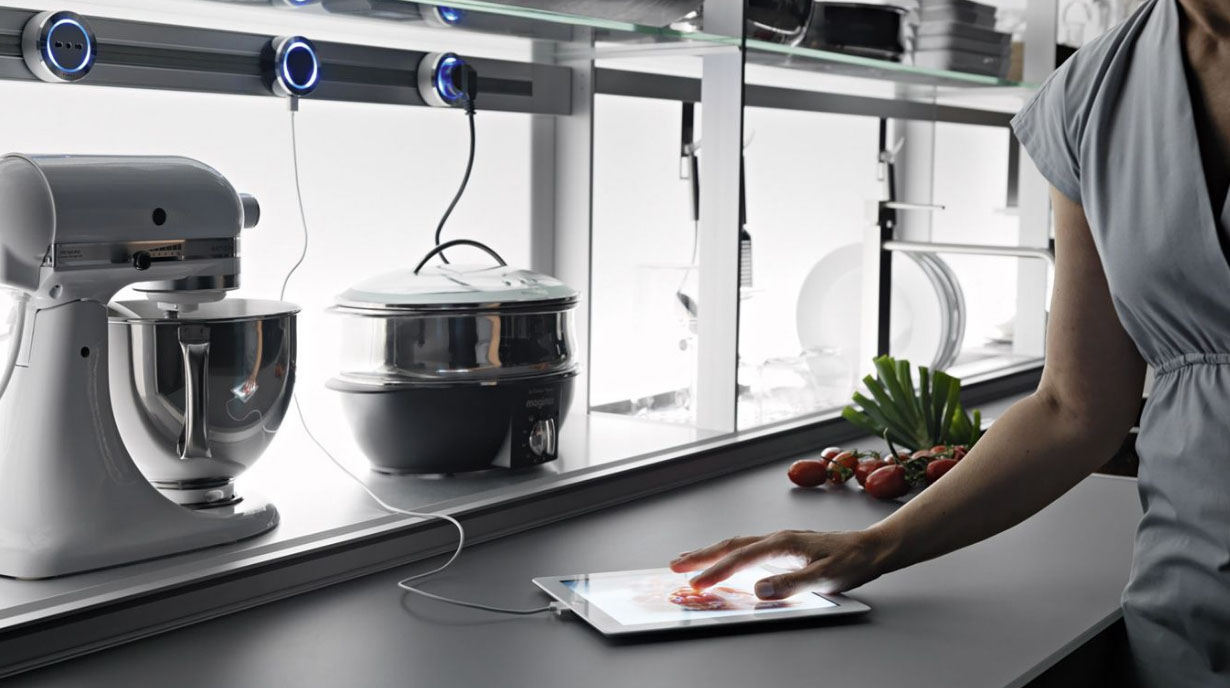
To connect each of the stationary, energy-intensive appliances (the refrigerator, cookers, kitchen hood, microwave oven or a dishwasher) It requires the installation of overhead outlets, calculated on the unit power and disposed behind the facade of the kitchen units in the region 10-15 sex. Should be considered, that standard domestic devices are designed for load within 1,4-1,5 kW, on - better 3-3,5 kW. If you plan to spend electricity in the house with his own hands, should not be to save money and choose the cable cross-section, accurately calculated on the total electrical power. Always necessary to leave the stock for at least 25-30%, as the number of devices is constantly increasing.
The total capacity of household appliances must not exceed the maximum permissible load on the household electricity. Besides, for energy-consuming devices at the distribution board installed separate circuit breaker.
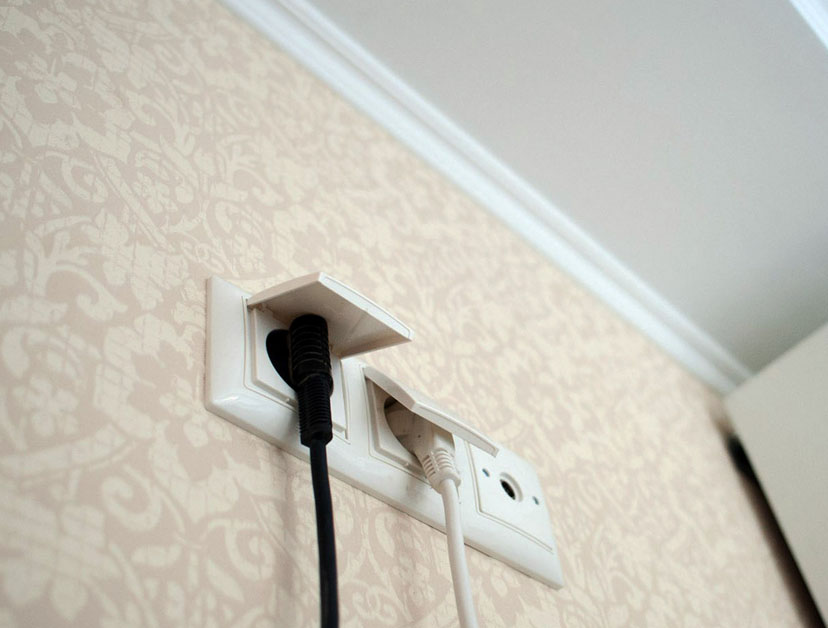
The use of medium and small electric appliances in a kitchen has its own specifics. such instruments, as a grinder, blender, mixer and others do not have a stationary location and are used periodically. Besides, sources of electric power in the kitchen exposed to the negative effects of, they can get spray of water or fat, which will lead to a short circuit and damage.
Flush socket, located in the cupboard under the sink or in the immediate vicinity of the sink, hob and other places with high risk of moisture, necessarily must comply with protection class IP44 (by splash protection).
Withdrawable unit for kitchen outlets is optimal yield of the situations described: the number of connection points is increased without the appearance of a lump or a bunch of tees clutter from extensions, outlet for the kitchen are well protected against moisture, and if there is no need for it to connect the unit to easily hide and does not take up too much space.

Varieties embedded sockets
Retractable sockets for the kitchen designed to connect periodically the instruments used, use them to connect stationary equipment is inappropriate. After all, the main advantage of this option is, that access to the device only organized with the needs of, and at other times it does not attract attention and does not take up valuable space. Structurally, hidden outlet for the kitchen are similar to conventional extensions, however, more convenient to use. It produces several variants of such devices:
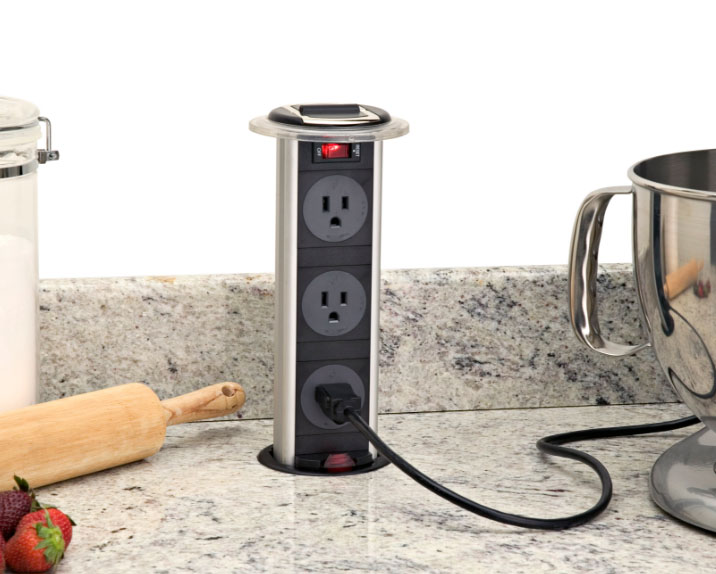
- Vertical sliding rosette of countertops. Structure equipped with a round lid with a diameter of 60 to 102 mm for standard models, and by 102 to 120 mm for blocks, providing the possibility of closing without disconnecting devices. Extension occurs by pressing on the cap, after which the socket is easily rotated in the right direction.
- Swivel retractable socket countertops. The design is arranged horizontally and is equipped with rectangular lid. Built-in socket in the worktop of this kind have one advantage - do not take up valuable space in the cabinet when closing, It has been arranged at the top of.

In addition, products are equipped with circuit breakers, network indicators, Strength Meter, plug ejector, child protection and other advanced features.
Another interesting option, saves space, are angled sockets for kitchen, installed at the junction of the walls under the suspended cabinet.
Advantages of sliding devices:
- Saving valuable space (conditional advantage, as in the closed position Mortice outlet countertop occupy space inside the cabinets).
- Compared to conventional extensions, better protected from moisture, grease and dirt.
- The original design, such devices are organically look in the interior, made in industrial style or high-tech style.
- Due to the placement and method of nomination are difficult for children.
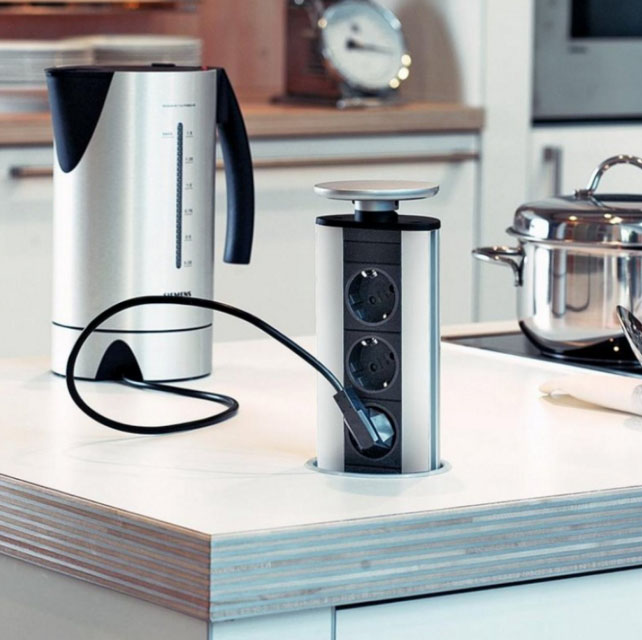
Installing drowning outlets into the countertop, and other places
Built-socket block is installed in different pieces of furniture:
- The table top. Concealed outlet in the table top easy to operate, in the closed position on the cap set utensils and other household items, However, with such an arrangement increases the risk of falling into the water gaps, dirt or grease.
- In Tumbe. In this case, sliding outlet opening in the direction of, it has its drawbacks: in the open position structure can interfere with the movement, connecting the instrument device undergoes vertical load, which can lead to breakage.
- The hanging cabinets. One side, Plug the device cable have to lift up, which is not always convenient, on the other hand, block kitchen outlets is protected from the negative impacts of site, eliminating the risk of short-circuiting due to moisture.
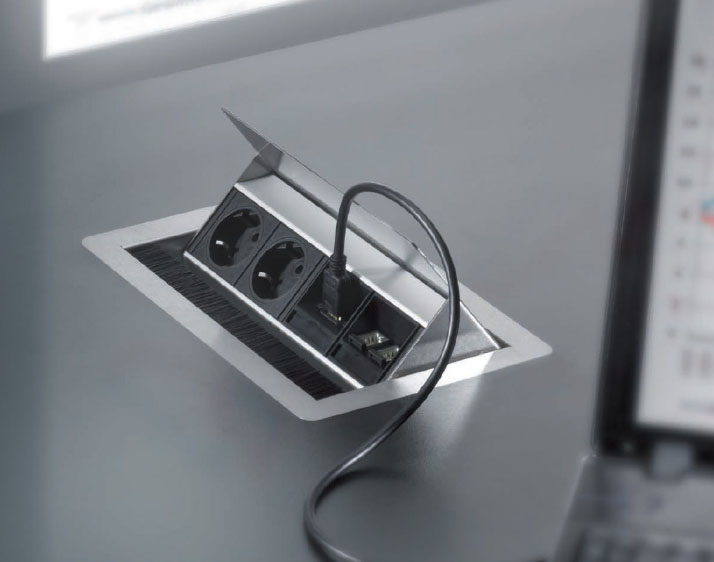
When connecting socket in the worktop in the kitchen to the single-phase network can not go wrong. Make connections of three-phase sockets, you need to connect cables according to their destination, focusing on the received color-coded:
- Phase - White, red or brown wire.
- Zero - black or blue.
- Grounding - green or yellow.
Fitting unit according to the scheme Sequence
Set the socket in the worktop in the kitchen can be independently. Such work does not require special skills or the availability of special tools. Works are carried out in several stages:
- Determined optimum location for the installation. Despite the availability of protection, device must be removed by washing and the cooker. When choosing the location take into account the length of the device to place it in a closed state.
- marked up the place (diameter of the device is specified on the packaging, ranging from 60 to 120 mm).
- With the desired nozzle diameter drilled hole, end zachishtayutsya.
- The device is secured in the bore by means of threaded fastening washers, the supplied.
![installation of sockets in the countertop]()
- Connecting to the network is carried out in the last stage, otherwise the wires will interfere in the works.

